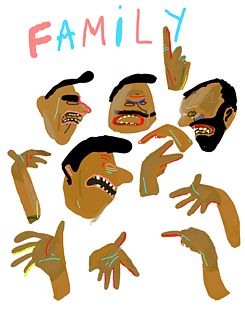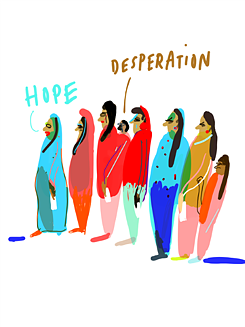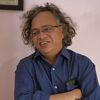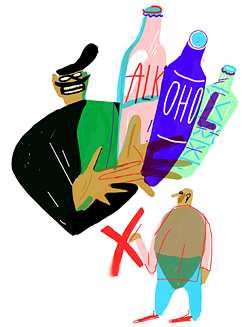04.11.2019 | Naren Bedide
Populism without a people
Dear friends,
Reading through this insightful dialogue, the contributions from writers across the world, I ask myself, is India a liberal democracy, with a representative form of government which is infected with bouts of populism, periodically? But before all that, I need to ask, is India a nation – in the same way as Brazil or Egypt or Hungary – because isn’t that the implicit backdrop of every democracy being discussed in this series? All through the following attempts to deal with the first set of questions, I keep returning to the second question.
In the first national elections in India, Nehru’s Congress party won on a ticket against colonialism and its native collaborators – the landlords and the moneybags. It was a party that was propped up by landlords and moneybags. In later elections, through the fifties and sixties, the list of the country’s enemies expanded to include Pakistan and then China. Britain and America were always there. In the seventies, Indira Gandhi raised the rhetoric on the filthy rich who indulged in hoarding of grains, blackmarketers and smugglers. All through this period, the righteous outrage over the ‘foreign hand’ (meaning foreign powers trying in various vile, underhand ways to ‘destabilise India’, by bribing opposition politicians or editors or civil society groups, or sabotaging defence or industrial projects, or fomenting insurgencies etc) was never toned down.
The point is, elections in India have always been populist, sometimes more, sometimes less. They were always about the ‘gareeb’ (the poor), the ‘aam aadmi’ (the common man) against the rich, the internal or foreign enemies, the ‘terrorist’ neighbours and the ‘terror’ groups supported by them, and so on.
How can elections be so uniformly melodramatic, laced with very personalized discourses between rivals and their supporters, completely bereft of any discussion on policy issues except at the most vulgar level?
 graphicrecording.cool
The reason why election debates in India seem like never-ending family disputes is because they are essentially that: family disputes. Since the very first polls, upper castes, who constitute around 15% of the population, have unfailingly occupied around 65-75% of seats in parliament. If nearly a quarter of the seats weren’t reserved for the former ‘untouchable’ communities, and the tribes, or indigenous peoples across regions, that number would have been close to 85-90%, on an average.
graphicrecording.cool
The reason why election debates in India seem like never-ending family disputes is because they are essentially that: family disputes. Since the very first polls, upper castes, who constitute around 15% of the population, have unfailingly occupied around 65-75% of seats in parliament. If nearly a quarter of the seats weren’t reserved for the former ‘untouchable’ communities, and the tribes, or indigenous peoples across regions, that number would have been close to 85-90%, on an average.
If this picture doesn’t remind one of Apartheid era South Africa, the state of representation in the judiciary and the media, the other ‘pillars of democracy’, most definitely will.
This question springs up: why or how are the unrepresented majority, which means nearly 90-95% of India’s castes and tribes, drawn into this farce? Someone needs to sweep up after the elephants to make the circus ready for the next show. Or because the observer of any Indian family dispute also gets a sense of participation, even if she doesn’t get any share in the property being disputed.
Yes, both answers seem cynical. But after 70 years, and 17 general elections, we seemed to have arrived at a prolonged impasse. Or a permanent one. Seventy years ago, Bhimrao Ramji Ambedkar, social philosopher, political reformer and constitution maker, had said: Democracy in India is only a top dressing on an Indian soil, which is essentially undemocratic.
Democracy in India is only a top-dressing on an Indian soil, which is essentially undemocratic.
Dr. B.R. Ambedkar, Annihilation of Caste
That explains the situation a bit. The most persuasive advertiser gets the prize, most times. This explains a bit more: the lower caste Indian voter and the upper caste candidate have forged a patron-client relationship at the village level, much like the tie between a serf and a feudal lord in older times. The candidate facilitates the provision of some public services to some individual voters, and buys others with plain cash, liquor etc.
The vote is the only entitlement that this voter is assured of by the state. For any other service, he has to depend on the medieval kind of bond that ties him to the elected upper caste official. This situation varies across states, or provinces – in states where public services, like education, health, and some structural inequalities like land distribution have been addressed better, the voter feels more empowered, relatively free of the shackles of this unequal relationship.
But why does the upper caste candidate bother to seek the votes of the lower castes, if he’s going to win anyway?
Democracy, despite all its frailties, is more intensely engaged with at the village, province level than at the central, federal, or national level. That’s where it becomes more of a pointless exercise in shrill interjections. The idea of the Ram Mandir in Ayodhya (the birthplace of the mythical character Ram, according to Brahmanic fundamentalists, who believe it originally housed a Ram temple which was destroyed to build a mosque by the Mughal emperor, Babar; it has become a rallying point for ‘Hindu’ mobilization and communal violence for the last three to four decades) wasn’t conceived in a village, it was born in Delhi. It’s clear, the vituperative argumentation in giving a nation-like face to an empire, among rival factions of the upper caste family, at the ‘national’ or federal level, harms the promise of more substantive democracy at the village and provincial level. Because the centre is vested with much more funds and powers. After independence, Delhi has replaced London as the heart of the empire.
That’s because, all things fairly considered, the Indian rulers inherited an empire in 1947. Mark Twain said that ‘it takes eighty nations, speaking eighty languages, to people her, and they number three hundred millions.’
‘It’ meaning India. What is it? It was just a land mass through most of history. Just Hind, or India, the land beyond Sindh, or the Indus. Even that name wasn’t coined by anyone living the sub-continent. Its invention is attributed to the ancient Persians or Greeks or Arabs or the British etc., by various sources. But what we can glean from those different attempts by not always fatherly name-givers is that India is or was just a land mass, as stated earlier, for most of history. Where you could encounter eighty nations or eight hundred, 600 languages, 6000 castes. And lots of tribes.
Veteran human rights activist and Dalit thinker Bojja Tharakam had observed how the makers of the constitution for the new state of India couldn’t agree on a name for the country. Ultimately, he says, the expression ‘India, that is Bharat’ was adopted. He comments that it is ‘very strange now to think that even at the time of naming the country the members (of the Constituent Assembly) were ambivalent. Nowhere in the world does a country have two names in a single phrase’.
Two names: one of them, Bharat, the name of a character from Brahmanic mythology of whom the widest majority of Indians had never heard, and the other, India, derived through mutations of the name of the river Sindh, which originates in Tibet and now flows through Pakistan, not India, to merge in the Arabian Sea, finally.
Remember, the British transferred power (over their empire) to the Indian ruling classes, which they had been trying hard to do since the turn of the century. The only problem was, they didn’t know who to transfer it to. What nation should be freed? The upper castes were engaged in prolonged wrangling throughout this period to arrive at a collective face for India.
British historian Perry Anderson says: The sub-continent as we know it today never formed a single political or cultural unit in pre-modern times. For much the longest stretches of its history, its lands were divided between a varying assortment of middle-sized kingdoms, of different stripes.
The ‘idea of India’, he goes on to say, was ‘essentially a European, not a local invention, as the name itself makes clear. No such term, or equivalent, as India existed in any indigenous language. A Greek coinage, taken from the Indus river, it was so exogenous to the subcontinent that as late as the 16th century, Europeans could define Indians simply as ‘all natives of an unknown country’, and so call the inhabitants of the Americas.’
When the British left, it was a collection of 584 princely states (including Kashmir) over which the British held suzerainty but didn’t rule directly, and provinces which they ruled directly. How could that multi-centred political landscape be imagined as a single nation?
The social theorist Gnani Aloysius explains how the traditional elites developed a nationalism without a nation in India, through the colonial period and later.
The traditional upper classes or castes, led by the Brahmins, in the British ruled regions had become the first collaborators of the colonial project. While the ruling classes in the princely states which had been subdued but not annexed by the British had become natural allies. These were again composed of upper caste clans, across religions.
These native elites, through the nineteenth and twentieth centuries, initiated a campaign of reformation of sorts, across the political, social and cultural and religious arenas, to build a narrative of a timeless India, informed by an ‘impress of oneness’ which still continues. To bolster ‘the idea of India’, they relentlessly evoked the tropes of ‘antiquity-continuity; diversity-unity; massivity-democracy; multiconfessionality-secularity’ as Anderson observes.
‘The British created Hinduism’, says Aloysius. Ambedkar remarked:
The first and foremost thing that must be recognized is that Hindu Society is a myth. The name Hindu is itself a foreign name. It was given by the Mohammedans to the natives for the purpose of distinguishing themselves [from them]. It does not occur in any Sanskrit work prior to the Mohammedan invasion. They did not feel the necessity of a common name, because they had no conception of their having constituted a community. Hindu Society as such does not exist.
Just as the word India itself was of exogenous origin, so was the religion of Hinduism. Until the early nineteenth century, the term Hindu wasn’t much recognised, nor was it used to describe a religion. Orientalism and colonialism gave the Brahmins a convenient perch to categorise all the thousands of native faiths, practiced by the lower castes and tribes, different facets of the new religion called ‘Hinduism’, and declared themselves as its custodians. This is where the narrow set of parameters through which Europeans evaluated religion and worship set in motion a colossal mistake.
Through these and other errors of miscategorisation, the British helped the native elites in reasserting their cultural supremacy and eventually, their political hegemony. One nation, one religion and one social order: that became the normal understanding of India. Whether India ever had a social hierarchy that matched the Varna system (Chaturvarnya, or the social order, conceptually based on ‘worth’ according to some interpretations, of four Varnas – Brahmins, the priests at the top of the order; followed by Kshatriyas, the warriors; Vaishyas, the trading class and the Shudras, the servile class; – what exists now is the caste system of 4,000, some say 6,000, castes or jatis, based on birth) in toto remains a moot point, but over the last two centuries the Brahmin led upper castes have been trying to create such an unequal, hierarchical society.
 graphicrecording.cool
graphicrecording.cool
While the upper castes of India uniformly exhibit this anxiety to be recognized as a nation […], the majority, waver between periods of hope and despair.
While the upper castes of India uniformly exhibit this anxiety to be recognized as a nation because they can’t been seen as a pre-modern empire in the age of the United Nations, the lower castes, the majority, waver between periods of hope and despair. The hope to become the nation that Ambedkar had talked about:
I am of the opinion that in believing that we are a nation we are cherishing a great delusion. How can people divided into several thousands of castes be a nation? The sooner we realise that we are not as yet a nation in the social and psychological sense of the word, the better for us. For then only we shall realise the necessity of becoming a nation and seriously think of way and means of realising the goal.
It was Ambedkar who infused the ideals of ‘liberty, equality and fraternity’, into the constitution, as its chief designer and its moving spirit. He, more than Gandhi, Nehru and umpteen others, had espoused the egalitarian values of the enlightenment in India, although he attributed his inspiration to the Buddha and his Sangha, more than the French Revolution and Europe. Ambedkar represented not just the views and aspirations of the former ‘untouchables’, as he was also one among them, but also of the lower caste majority as a whole. Even as he commandeered the making of the constitution through the strident and subtle obstacles placed in his path by the upper caste ‘progressives’, whom he labeled as ‘social tories and political radicals’.
Does India need a ‘cultural elite’?
It already has one. It always had one in the form of the Brahmins, and now over the last two centuries, thanks to British distribution of land rights mostly in favour of 1-5 castes in every province (ignoring 200-400 castes in each province), they also co-opted all these other newly minted upper castes from every region into this ‘national’ elite. Also, to imagine a cultural elite that would be divorced from political and economic power – that’s a challenge.
Looking through the other contributions again briefly, comparing, democracy, representative government and liberal values – they all seem like the emperor’s new set of clothes here. Before all that, is India a nation? India is another planet, maybe.
~ Naren Bedide (Kuffir)

